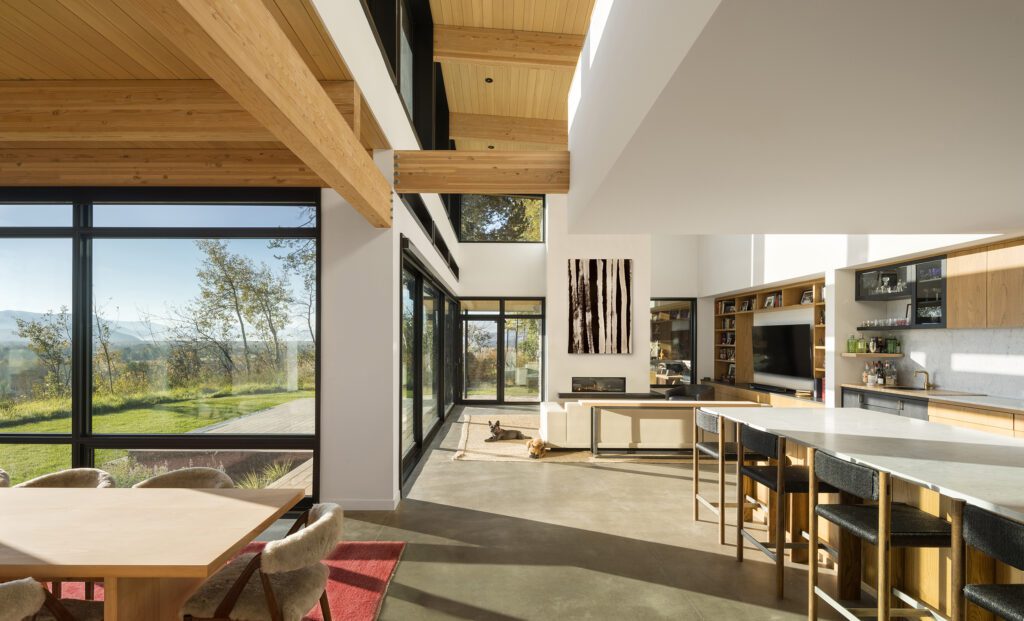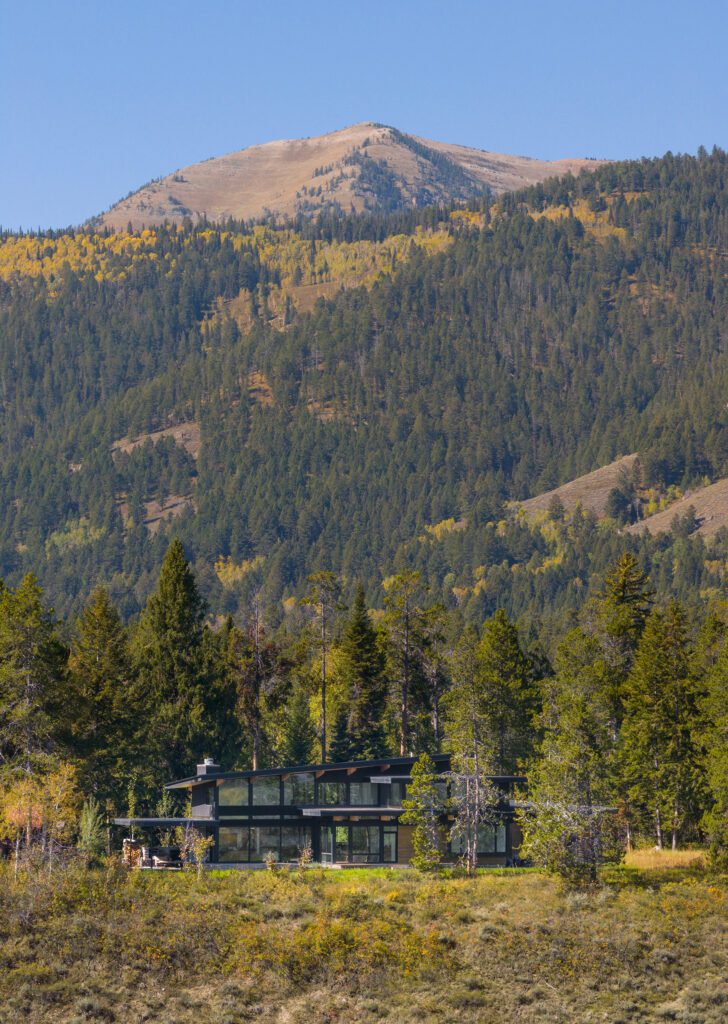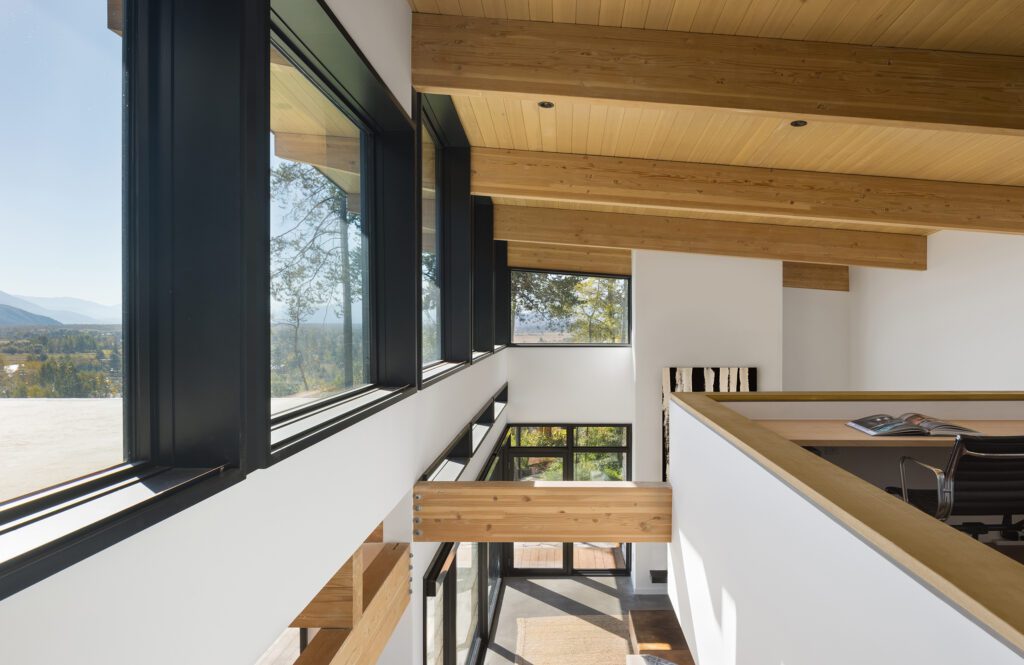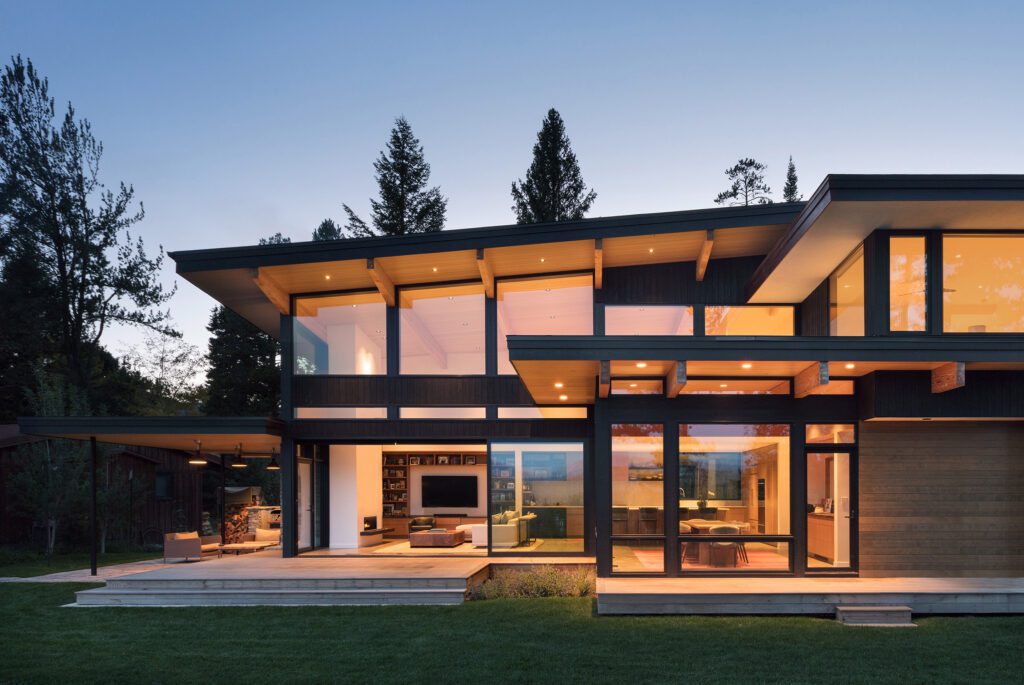
This is the third in a series of posts exploring materiality in the architecture of Turkel Design homes—specifically, our use of wood. In previous posts, we delved into the organic qualities of wood and examined both the complementary and contradictory elements of wood and stone.
To explore this interplay, we focused on Mulmur Hills Farm—an Ontario home built almost entirely from those two materials, plus glass. Now, we move west to Wyoming, where Teton Mountain Home stands on a bluff, framing the spectacular views beyond—and exemplifying the special relationship between wood and glass.

A Wood Frame, Framed by Woods
Surrounded by proud fir trees and imposing peaks, Teton Mountain Home is inspired by its location, with carefully framed views and an embrace of indoor/outdoor living. It is a home for an active family that enjoys the lifestyle of the mountain region. With this purpose in mind, our team worked with the homeowners to select premium wood materials that honor and reflect the home’s surroundings. For example, ceiling beams are made from Douglas fir, a species prevalent in the forests around the Teton Mountains. All the qualities we extolled in our post “The Wonders of Wood” are evident in this home:
- wood’s organic nature as a living material, with grain that suggests how it wants to be used
- the way its natural strength and beauty reveal the functionality of post-and-beam architecture
- its ability to create a sense of place
Looking Through the Glass
Now, consider the role of glass in our appreciation of the qualities above. Contrary to the opacity of wood, glass brings lightness and transparency, which further our appreciation for the wood. At Teton Mountain Home, the open, double-height great room is wrapped in walls of glass, including retractable doors. The transparency of the glass connects the materiality of the wood materials inside the home to the landscape outside. Even while indoors, one’s experience of the home is shaped by the forests and mountains beyond.

The Douglas fir glulam beams that stretch across the great room extend past the glass walls to the outdoor overhang. The rhythmic quality of the beams captures the eye and draws it outward to the rolling views beyond. The reverse is also true; the glass walls allow the home’s wooden structure to be visible even from outside. Viewed from this perspective, the glass helps the wood reveal to us how it supports the structure.

The transparency of glass brings in natural light, which highlights the aesthetic qualities of the wood: its natural beauty, texture, and grain. Bathed in natural light, the wood creates a sense of warmth that helps transform a building into a home.
Materials That Make a Home Built to Last
Wood has a timeless quality; we associate it with hundreds of years of timber-frame architecture. Glass, in contrast, feels more modern, especially when paired with manufactured materials such as aluminum and steel. The combination of wood and glass, however, maintains a sense of modernity without sacrificing that sense of timelessness. When employed with the right design principles, it creates beautiful modern architecture that doesn’t feel like a product of the moment in which it was built.
Turkel Design uses premium materials to ensure that our prefabricated custom homes will stand the test of time. We work closely with you to design a custom home that suits your location and your lifestyle today and for years to come.
Contact us to discuss how you want to live.



